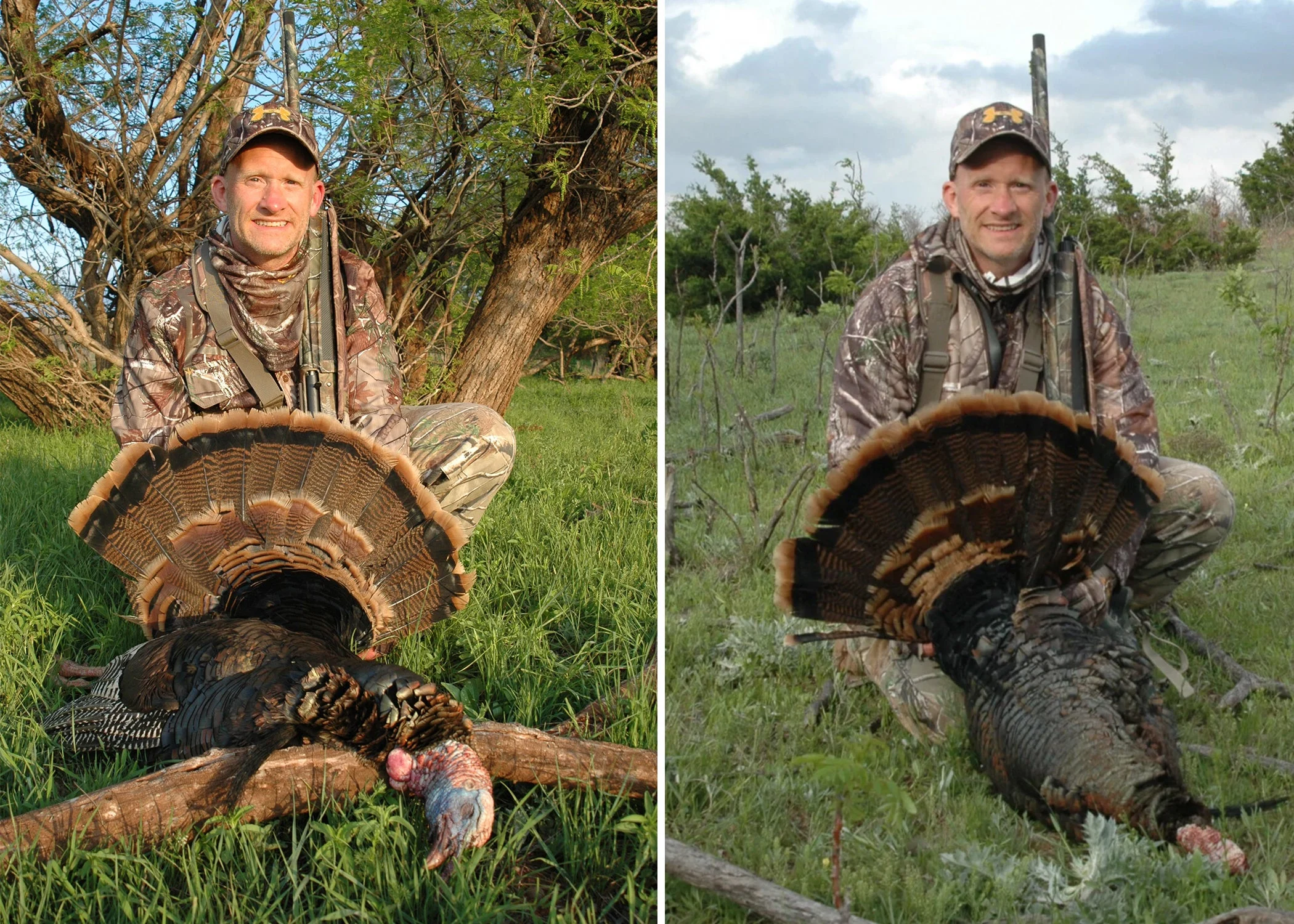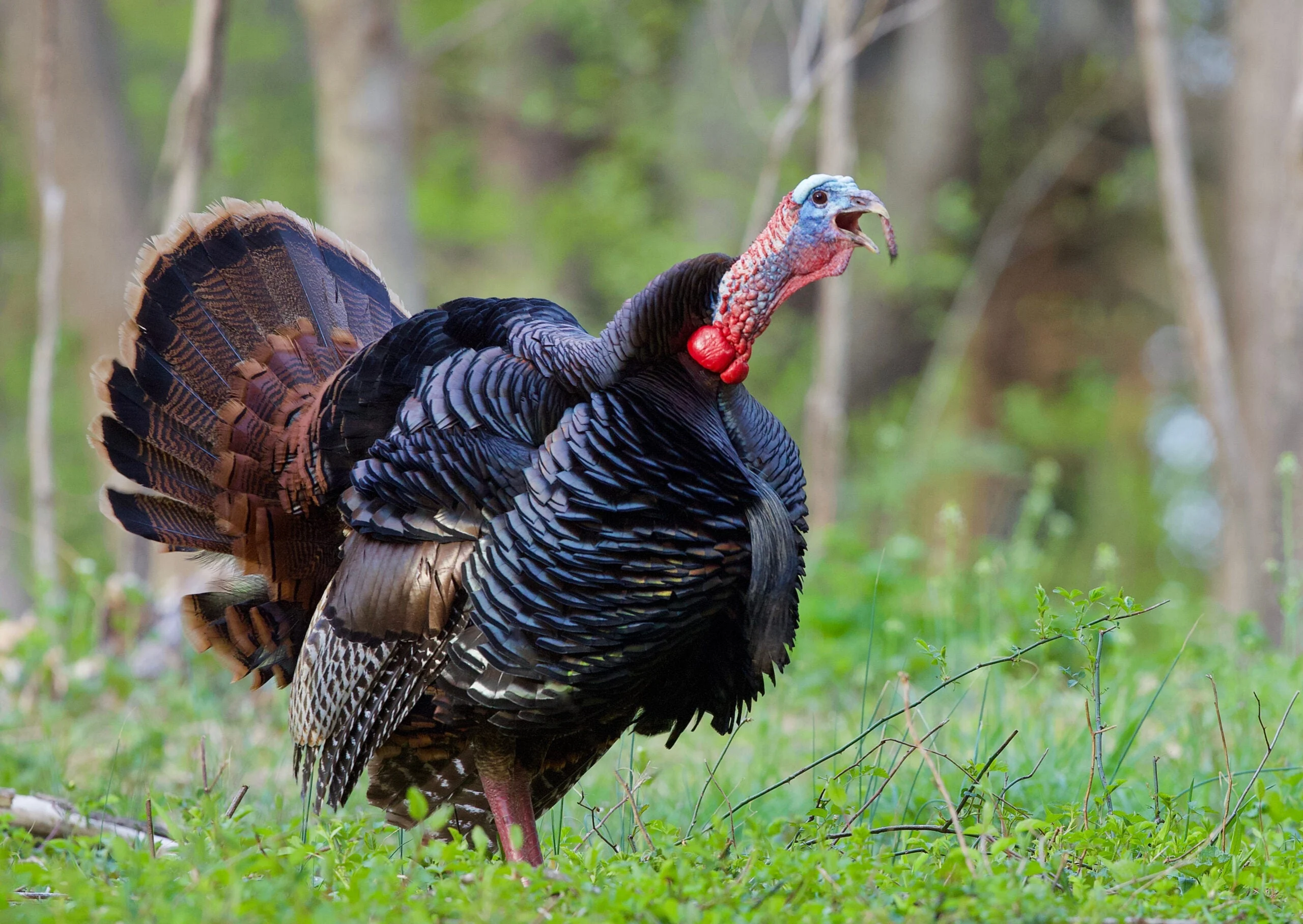Everybody loves a long weekend, but if you’re a turkey hunter, this coming weekend is one you’ll really want to extend. Why? Because Friday, April 26, is the next pick in our Best Days of the Strut series
. So go put in for the day now and then get ready for some stellar hunting. To help you tag your gobbler on Friday, we asked Wisconsin turkey hunting expert Brian Lovett to lay out a specific game plan. Lovett, who keeps a written record of every one of his turkey kills, has tagged more than 200 toms in his three-decade career—and more of those gobblers have fallen on April 26 than any other day.
Though Lovett primarily chases the big Eastern turkeys of the Midwest, he has hunted all over the country, and his advice is solid no matter where you’re trying to tag a tom. So, let’s get to it.
Learn how to subscribe to the new Field & Stream magazine here!
The Pro: Brian Lovett, Wisconsin

Lovett with just two of more that 200 toms he has taken around the country. Brian Lovett
Brian Lovett has enjoyed 34 seasons of spring hunts, and his passion for turkeys has led him to chase birds in 22 states and Mexico. The “On the Hunt” field editor for the National Wild Turkey Federation’s _Turkey Call
_ magazine and co-chair of the organization’s Grand National Calling Championships, Lovett has completed 10 Grand Slams and a Royal Slam. He hunts multiple states each spring and averages over 30 days afield each year. Lovett has shared his extensive in-the-field experience in five books on turkey hunting
.
Related: Best Turkey Shotguns for 2024
The Strut Stage: Early Breeding to Peak Breeding
Nailing down the strut stage is like hitting a moving target for Lovett because he travels so much to hunt. “In my home state of Wisconsin, serious breeding is still a few days away, while in Missouri and Kansas, which I typically visit in the spring, toms are with hens right away in the morning, but are often alone by mid- to late-morning. It’s not uncommon for hens to be roosted close to toms, so a roost hunt has the potential to blow up in a hurry, but things can get much better later in the morning as hens head for the nest and satellite toms find themselves out of the action.”
Generally speaking, in the swath that stretches east-to-west across the top third of the country, birds will either be in the early breeding phase of just hitting peak breeding. In the former case, roost hunts can be a little more productive; in the latter, midday hunts are apt to be better.
**Related: How to Use a Turkey Mouth Call Like a Pro
(with Video)**
Expert Tactic for April 26: Hunt Small-Tract Honey Holes

Simply waiting out a tom is often all it takes to get him to break toward you. tomreichner / Adobe Stock
Like many hunters, Lovett is often limited to chasing toms on several small farms rather than one large estate, a reality that has forced him to adjust his tactics. “I used to be pretty single-minded,” he says. “If a roost hunt flopped, I’d start walking and calling, covering lots of ground to find a receptive bird. Then I realized those cutt-and-run hunts were turning into cutt-and-bump hunts, especially since trees where I hunt are typically not leafed out and I was boogering turkeys by moving too much.”
Now, Lovett prefers to sneak into a property and set up and call undetected. “I might strike a hot tom right away, but if not, I settle in and just start with soft calling–in case there’s a bird nearby–but I’m content to sit for an hour or so, ramping up the calling volume and intensity a bit. Usually I can pull a gobble from a tom with this approach.”
If a bird that Lovett strikes this way doesn’t commit immediately, he’ll stay put at first. “Often just a little extra patience will make him break,” he says. “But if a bird doesn’t seem to buy what I’m selling, I’ve found making a move on him—after striking him from one spot, as opposed to walking all over the property—can make all the difference.”
Again, with foliage light on small properties, Lovett can’t afford to be too aggressive, but if he can get by with sneaking or crawling a little closer, or using terrain to get a different angle, he’ll do it. “I think giving a sense that the “hen” is moving can be all it takes to motivate even a stubborn gobbler to come closer.”
In the end, says Lovett, “It’s an old-school patience hunt that relies on calling and woodsmanship lets the turkey set the tone. If a tom’s gobbling is sporadic, I’ll match my calling and keep things low-key. But if he’s firing up a bit, I get more aggressive and make him think I’m excited too. And even if I do bump him by making a move, it’s rarely catastrophic, and I can simply come back and try another day.”
**Read Next: Best Turkey Calls of 2024
**






